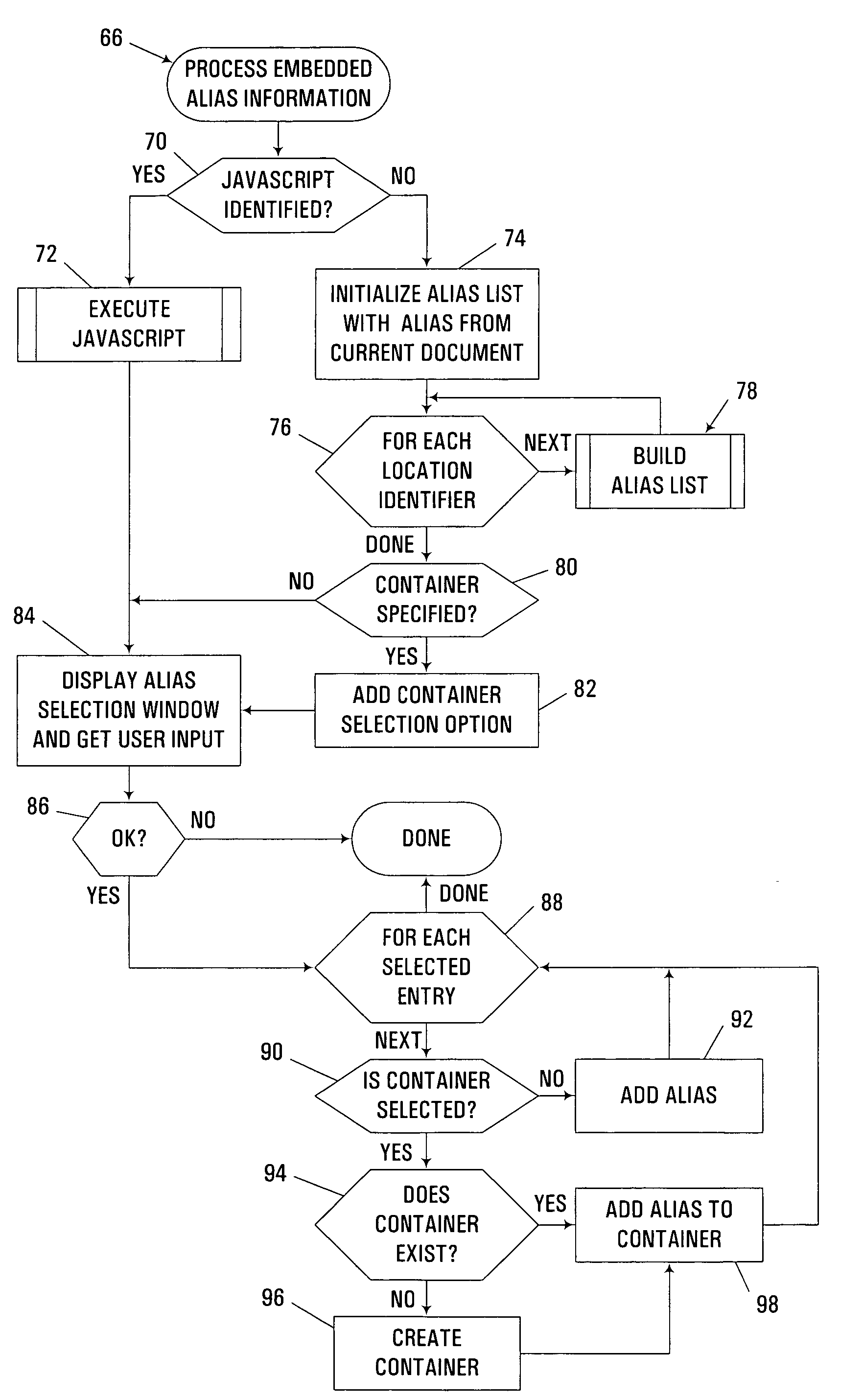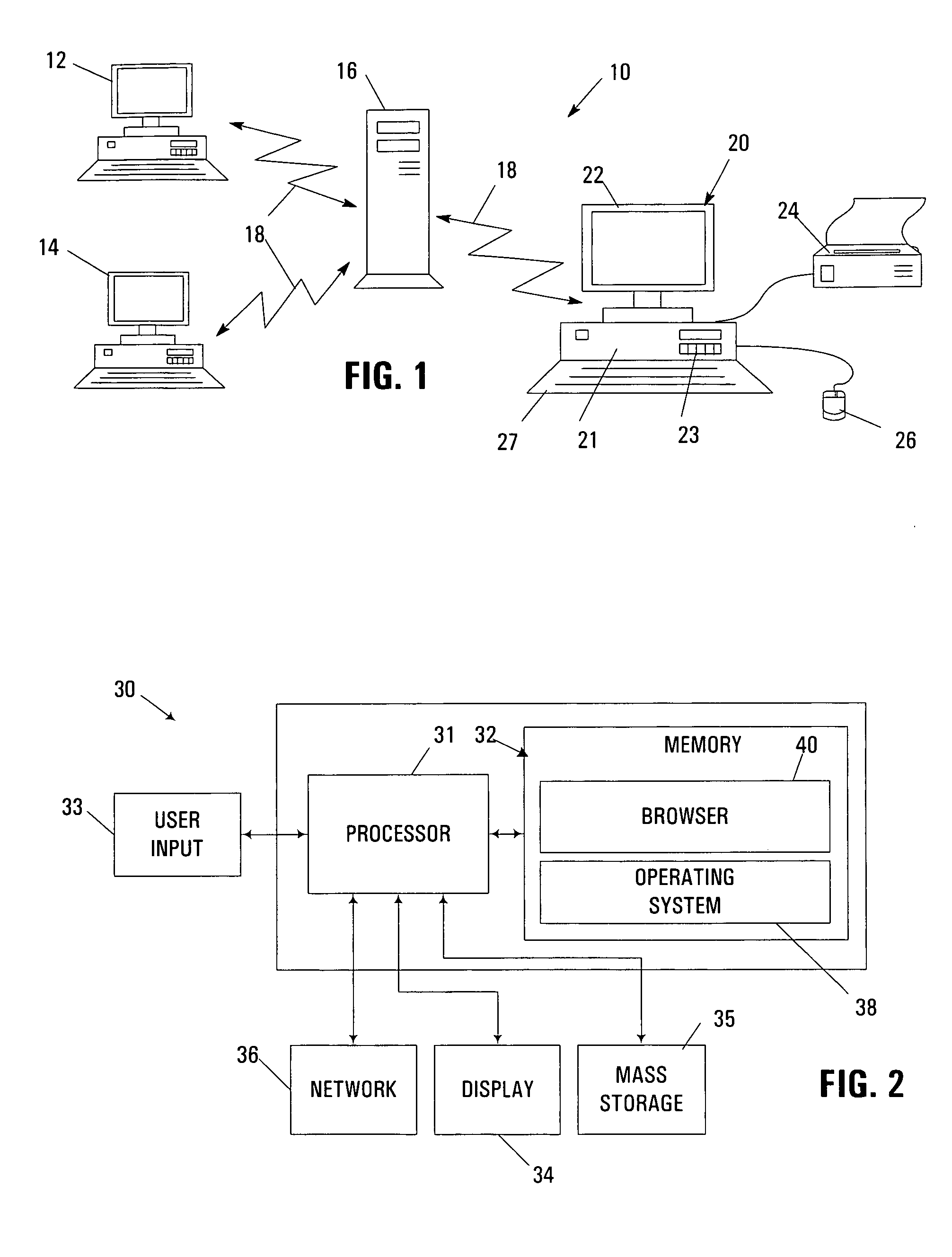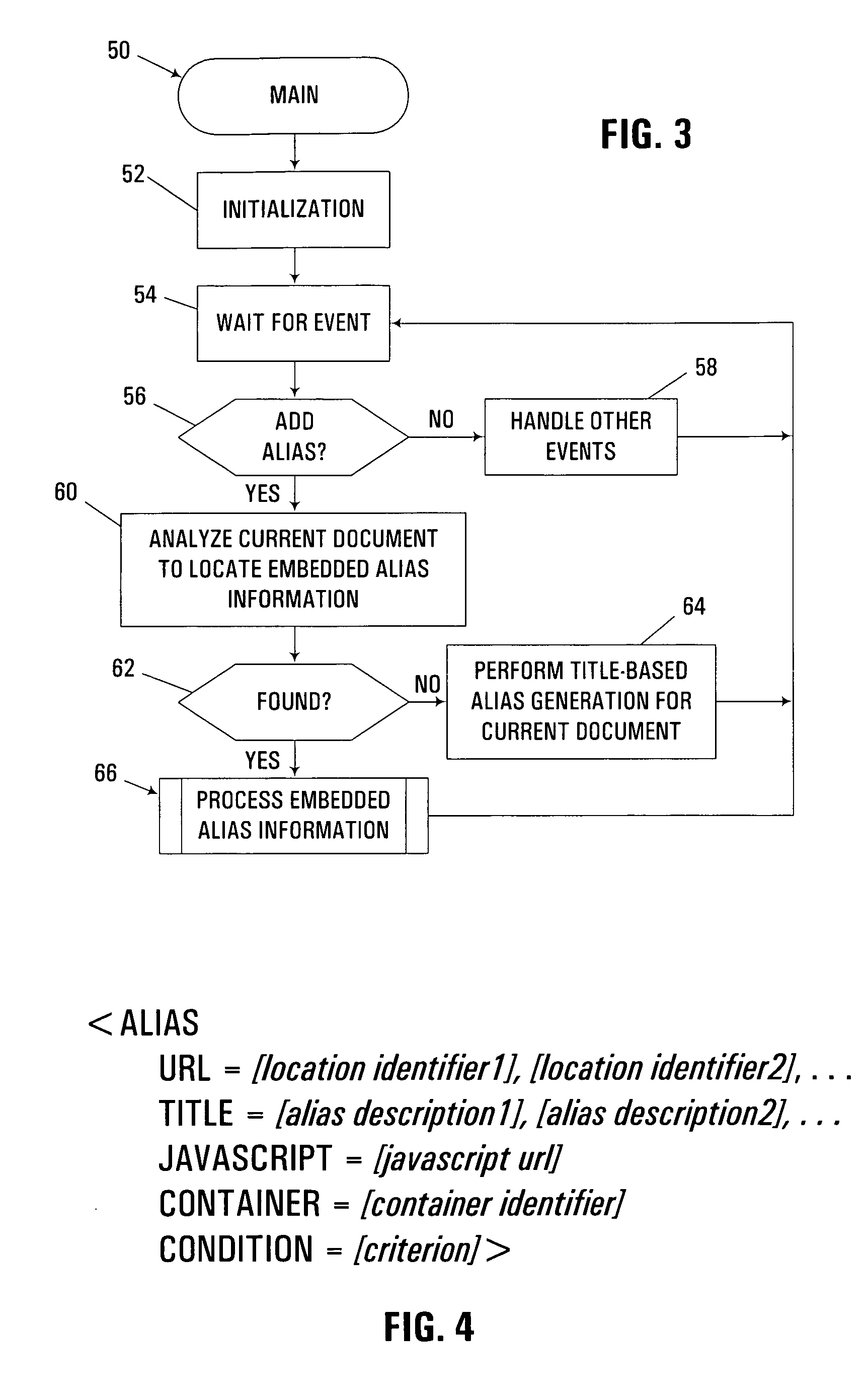Automated generation of aliases based on embedded alias information
a technology of embedded alias information and automatic generation, applied in the field of computer software, can solve the problems of large and cumbersome alias lists, difficult for users to remember the urls of previously-viewed locations, and difficult for users to remember them, so as to reduce the amount of manual editing or configuration by users, and maximize the utility of generated aliases.
- Summary
- Abstract
- Description
- Claims
- Application Information
AI Technical Summary
Benefits of technology
Problems solved by technology
Method used
Image
Examples
Embodiment Construction
[0024]The embodiments described hereinafter may be used to enhance the ability of a user to create and maintain effective aliases for storage locations on a computer system. An alias, which is also often referred to as a bookmark, a favorite, or a shortcut, typically provides an alternate and more descriptive identification of a storage location. The storage location may be internal to a workstation or other single-user computer, e.g., a filename and / or path for a particular document or file stored thereon. In the alternative, the storage location may be external to a workstation, e.g., as stored on a network server, e.g., over a private LAN or WAN, or over a public network such as the Internet. As such, the storage location may be identified by an address in the form of a Uniform Resource Locator (URL), the format of which is well known in the art. However, it should be appreciated that the invention may also be used in aliasing other locations of information within or outside of a...
PUM
 Login to View More
Login to View More Abstract
Description
Claims
Application Information
 Login to View More
Login to View More - R&D
- Intellectual Property
- Life Sciences
- Materials
- Tech Scout
- Unparalleled Data Quality
- Higher Quality Content
- 60% Fewer Hallucinations
Browse by: Latest US Patents, China's latest patents, Technical Efficacy Thesaurus, Application Domain, Technology Topic, Popular Technical Reports.
© 2025 PatSnap. All rights reserved.Legal|Privacy policy|Modern Slavery Act Transparency Statement|Sitemap|About US| Contact US: help@patsnap.com



